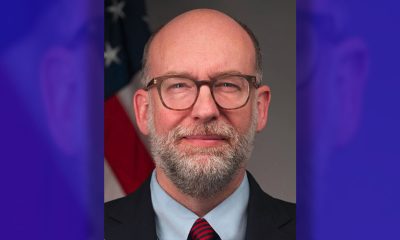National
Police Killings Underscore Need for Reform

People participate in a protest in response to the grand jury’s decision in the Eric Garner case in Times Square in New York, Wednesday, Dec. 3, 2014. The grand jury cleared the white New York City police officer Wednesday in the videotaped chokehold death of Garner, an unarmed black man, who had been stopped on suspicion of selling loose, untaxed cigarettes, a lawyer for the victim’s family said. (AP Photo/Seth Wenig)
By Freddie Allen
NNPA Senior Washington Correspondent
WASHINGTON (NNPA) – Blacks and Latinos are incarcerated at disproportionately higher rates in part because police target them for minor crimes, according a report titled, “Black Lives Matter: Eliminating Racial Inequity in the Criminal Justice System” by the Sentencing Project, a national, nonprofit group that advocates for criminal justice issues.
Researchers said disparities are punitive and can turn deadly over minor violations.
For example, Eric Garner, 43, was stopped and accused of selling untaxed cigarettes, a misdemeanor, before Officer Daniel Pantaleo choked him to death on a sidewalk of a Staten Island neighborhood. Officer Darren Wilson stopped 19-year-old Ferguson resident Michael Brown for jaywalking, before a disputed confrontation led to Wilson fatally shooting Brown.
Targeting low-level lawbreakers epitomizes “broken windows” policies popularized during William Bratton’s first tenure as commissioner of the New York Police Department under then-Mayor Rudy Giuliani. Mayor Bill de Blasio reappointed Bratton to that position and he remains “committed to this style of order-maintenance policing,” even though only spurious correlations to its efficacy in crime prevention remain.
The report said that “flawed research” plagued an early study cited by proponents of the “broken windows” policies.
“More recent studies have found that high misdemeanor arrest volume, high summons volume, and other factors, have had only a modest association or no association at all with the city’s violent crime drop,” stated the report. “‘Stop and frisk’ activity has also been shown to have no impact on precincts’ robbery and burglary rates.”
Racial disparities exist at every step in the criminal justice system, the report noted. That helps explain why Blacks and Latinos account for about 30 percent of the United States population, but 56 percent of the incarcerated population.
In Ferguson, police stopped White drivers for moving violations 68 percent of the time, and the majority of Black drivers were stopped for license or equipment problems, the report said. Once they were stopped, Black drivers were searched at almost twice the rate as White drivers (12 percent vs. 7 percent), but White drivers were more likely to have contraband than Blacks (34 percent vs. 22 percent).
“Yet blacks were twice as likely as whites to be arrested during a traffic stop (10 percent versus 5 percent),” the report continued, partly because, “black drivers were more likely to have arrest warrants compared to their white counterparts. Black drivers were more likely to have these warrants in part because of unpaid fines related to their disproportionate exposure to traffic enforcement.”
Nationally, Blacks and Hispanics are three times as likely to be searched by police during traffic stops.
“Blacks were twice as likely as whites to be arrested during a traffic stop,” state the report. “These patterns hold even though police officers generally have a lower ‘contraband hit rate’ when they search Black versus White drivers.”
“Almost 1 in 3 people arrested for drug law violations is black, although drug use rates do not differ by race and ethnicity. An ACLU report found that blacks were 3.7 times more likely to be arrested for marijuana possession than whites in 2010,” stated the report. “This disparity expands at later stages of the criminal justice system so that 57% of people in state prisons for drug offenses are people of color, even though whites comprise over two-thirds of drug users, and are likely a similar proportion of sellers.”
The report continued: “Once arrested, people of color are also likely to be charged more harshly than whites; once charged, they are more likely to be convicted; and once convicted, they are more likely to face stiff sentences – all after accounting for relevant legal differences such as crime severity and criminal history.”
According to the report, these trends are driven by race-neutral laws that still have a significant have racial impact, criminal justice professionals influenced by racial bias, an underfunded criminal justice system, and policies that impose strict “collateral consequences” that make it harder for ex-offenders to return their home after prison.
If current incarceration trends hold, one in three Black teenage boys can anticipate going to prison in his lifetime, compared to one in 17 White boys. One in 18 Black women face the prospects of incarceration, compared to 1 in 111 White women.
“Federal prosecutors, for example, are twice as likely to charge African Americans with offenses that carry mandatory minimum sentences than otherwise-similar Whites,” the report said. “State prosecutors are also more likely to charge Black rather than similar White defendants under habitual offender laws.”
The report said that defense attorneys might show signs of racial bias in how they prioritize their caseloads, and all-White juries spend less time deliberating in cases than racially diverse ones. All-White juries are also more likely to seek the death penalty in capital trials.
“Because the criminal justice system is an institution that primarily reacts to – rather than prevents – crime, it is ill-equipped to address many of the underlying causes of crime,” stated the report. “But mass incarceration’s hold on vast public resources and the obstacles erected for people with criminal records further erode the economic and social buffers that prevent crime.”
The report recommended addressing the source of racial bias in the criminal justice system, revising draconian drug laws through reforms like the Fair Sentencing Act, establishing alternatives to incarceration for low-income youth, and redirecting public spending to crime prevention and drug treatment.
“The Fair Sentencing Act (FSA) of 2010 reduced from 100:1 to 18:1 the weight disparity in the amount of powder cocaine versus crack cocaine that triggers federal mandatory minimum sentences,” stated the report. “California recently eliminated the crack-cocaine sentencing disparity for certain offenses, and Missouri reduced its disparity. Thirteen states still impose different sentences for crack and cocaine offenses.”
More than 90 percent of ex-offenders complete their sentences and return to their communities, where they are often shut out of jobs and those with felony drug convictions are blocked from receiving federal aid like food stamps and publicly subsidized housing, the report said.
During a recent appearance on C-SPAN’s “Washington Journal,” Marc Mauer, the executive director for The Sentencing Project, said that there are hundreds of laws on the books in every state that restrict the ability of people coming out of prison to make ends meet once they return home.
Mauer added that the Equal Employment Opportunities Commission issued guidance to employers asking them to take a more nuanced approach to hiring.
“If we want people to succeed, we have to reconsider how we approach all these issues and not just say, ‘one size fits all. You have a conviction, that is it for you,’” said Mauer. “That doesn’t get us very far.”
###
Activism
Ann Lowe: The Quiet Genius of American Couture
Lowe was born in Clayton, Alabama, into a family of gifted seamstresses. Her mother and grandmother were well-known dressmakers who created exquisite gowns for women in the area. By the time Lowe was a young girl, she was already showing extraordinary talent — cutting, sewing, and decorating fabric with a skill that far exceeded her age. When her mother died unexpectedly, Lowe – only 16 years old then – took over her mother’s sewing business, completing all the orders herself.
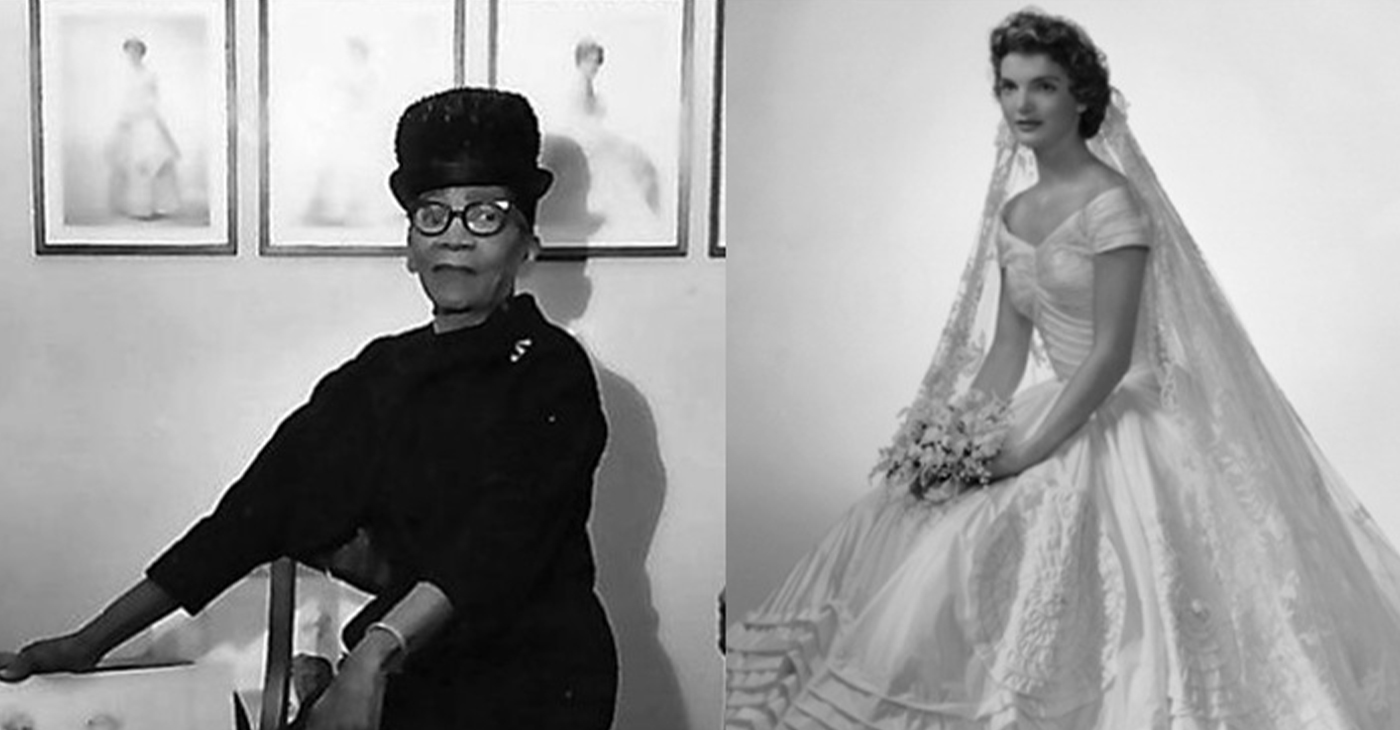
By Tamara Shiloh
Ann Cole Lowe, born Dec.14, 1898, was a pioneering American fashion designer whose extraordinary talent shaped some of the most widely recognized and celebrated gowns in U.S. history.
Although she designed dresses for society’s wealthiest families and created masterpieces worn at historic events, Lowe spent much of her life in the shadows — uncredited, underpaid, yet unmatched in skill. Today, she is celebrated as one of the first nationally recognized African American fashion designers and a true visionary in American couture.
Lowe was born in Clayton, Alabama, into a family of gifted seamstresses. Her mother and grandmother were well-known dressmakers who created exquisite gowns for women in the area. By the time Lowe was a young girl, she was already showing extraordinary talent — cutting, sewing, and decorating fabric with a skill that far exceeded her age. When her mother died unexpectedly, Lowe – only 16 years old then – took over her mother’s sewing business, completing all the orders herself. This early responsibility would prepare her for a lifetime of professional excellence.
In 1917, Lowe moved to New York City to study at the S.T. Taylor Design School. Although she was segregated from White students and forced to work separately, she, of course, excelled, graduating earlier than expected. Her instructors quickly recognized that her abilities were far above the typical student, especially her skill in hand-sewing, applique, and intricate floral embellishment – techniques that would become her signature.
Throughout the 1920s and 1930s, she designed gowns for high-society women in Florida and New York, operating boutiques and working for prestigious department stores. Her reputation for craftsmanship, originality, and elegance grew increasingly. She was known for creating gowns that moved beautifully, featured delicate hand-made flowers, and looked sculpted rather than sewn. Many wealthy clients specifically requested “an Ann Lowe gown” for weddings, balls, and galas.
Her most famous creation came in 1953: the wedding gown worn by Jacqueline Bouvier when she married Massachusetts Sen. John F. Kennedy. The dress – crafted from ivory silk taffeta with dozens of tiny, pleated rosettes – became one of the most photographed bridal gowns in American history. Despite this achievement, Lowe received no public credit at the time. When a flood destroyed her completed gowns 10 days before the wedding, she and her seamstresses worked day and night to remake everything – at her own expense. Her dedication and perfectionism never wavered.
She eventually opened “Ann Lowe Originals,” her own salon on New York’s Madison Avenue. She served clients such as the Rockefellers, DuPonts, Vanderbilts, and actresses like Olivia de Havilland. Yet even with her wealthy clientele, she struggled financially, often undercharging because she wanted every dress to be perfect, even if it meant losing money.
Lowe’s contributions were finally recognized later in life. Today, her exquisite gowns are preserved in museums, including the Smithsonian National Museum of African American History and Culture and the Metropolitan Museum of Art.
In the last five years of her life, Lowe lived with her daughter Ruth in Queens, N.Y. She died at her daughter’s home on Feb. 25, 1981, at the age of 82, after an extended illness.
Activism
Oakland Post: Week of December 10 – 16, 2025
The printed Weekly Edition of the Oakland Post: Week of – December 10 – 16, 2025
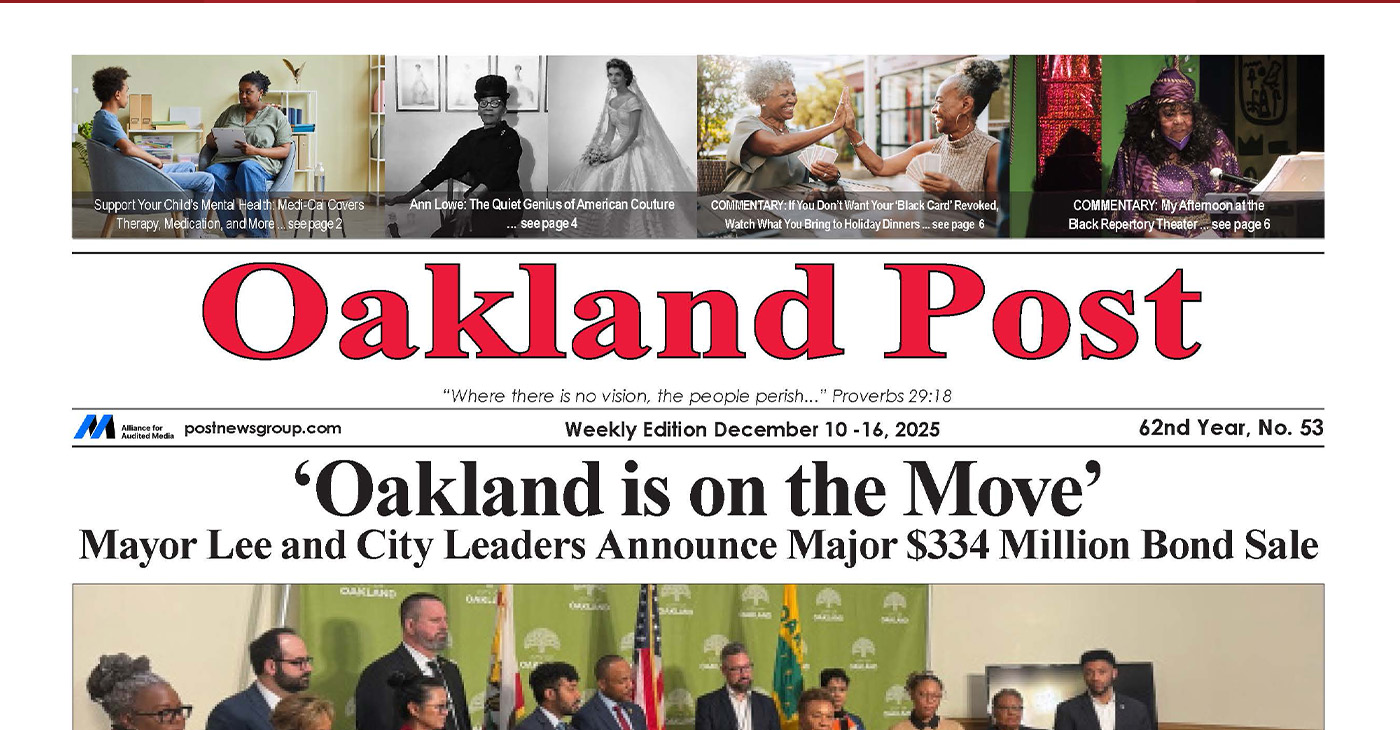
To enlarge your view of this issue, use the slider, magnifying glass icon or full page icon in the lower right corner of the browser window.
Alameda County
Seth Curry Makes Impressive Debut with the Golden State Warriors
Seth looked comfortable in his new uniform, seamlessly fitting into the Warriors’ offensive and defensive system. He finished the night with an impressive 14 points, becoming one of the team’s top scorers for the game. Seth’s points came in a variety of ways – floaters, spot-up three-pointers, mid-range jumpers, and a handful of aggressive drives that kept the Oklahoma City Thunder defense on its heels.

By Y’Anad Burrell
Tuesday night was anything but ordinary for fans in San Francisco as Seth Curry made his highly anticipated debut as a new member of the Golden State Warriors. Seth didn’t disappoint, delivering a performance that not only showcased his scoring ability but also demonstrated his added value to the team.
At 35, the 12-year NBA veteran on Monday signed a contract to play with the Warriors for the rest of the season.
Seth looked comfortable in his new uniform, seamlessly fitting into the Warriors’ offensive and defensive system. He finished the night with an impressive 14 points, becoming one of the team’s top scorers for the game. Seth’s points came in a variety of ways – floaters, spot-up three-pointers, mid-range jumpers, and a handful of aggressive drives that kept the Oklahoma City Thunder defense on its heels.
One of the most memorable moments of the evening came before Seth even scored his first points. As he checked into the game, the Chase Center erupted into applause, with fans rising to their feet to give the newest Warrior a standing ovation.
The crowd’s reaction was a testament not only to Seth’s reputation as a sharpshooter but also to the excitement he brings to the Warriors. It was clear that fans quickly embraced Seth as one of their own, eager to see what he could bring to the team’s championship aspirations.
Warriors’ superstar Steph Curry – Seth’s brother – did not play due to an injury. One could only imagine what it would be like if the Curry brothers were on the court together. Magic in the making.
Seth’s debut proved to be a turning point for the Warriors. Not only did he contribute on the scoreboard, but he also brought a sense of confidence and composure to the floor.
While their loss last night, OKC 124 – GSW 112, Seth’s impact was a game-changer and there’s more yet to come. Beyond statistics, it was clear that Seth’s presence elevated the team’s performance, giving the Warriors a new force as they look to make a deep playoff run.
-
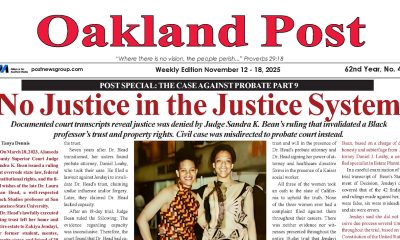
 Activism4 weeks ago
Activism4 weeks agoOakland Post: Week of November 12 – 18, 2025
-

 Activism4 weeks ago
Activism4 weeks agoIN MEMORIAM: William ‘Bill’ Patterson, 94
-

 Activism4 weeks ago
Activism4 weeks agoHow Charles R. Drew University Navigated More Than $20 Million in Fed Cuts – Still Prioritizing Students and Community Health
-

 Bay Area4 weeks ago
Bay Area4 weeks agoNo Justice in the Justice System
-

 #NNPA BlackPress3 weeks ago
#NNPA BlackPress3 weeks agoBeyoncé and Jay-Z make rare public appearance with Lewis Hamilton at Las Vegas Grand Prix
-

 #NNPA BlackPress3 weeks ago
#NNPA BlackPress3 weeks agoLewis Hamilton set to start LAST in Saturday Night’s Las Vegas Grand Prix
-
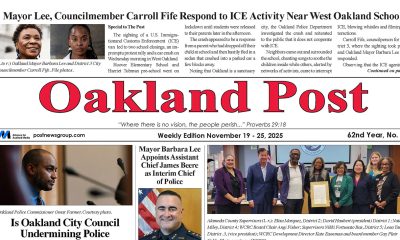
 Activism3 weeks ago
Activism3 weeks agoOakland Post: Week of November 19 – 25, 2025
-

 #NNPA BlackPress2 weeks ago
#NNPA BlackPress2 weeks agoLIHEAP Funds Released After Weeks of Delay as States and the District Rush to Protect Households from the Cold



